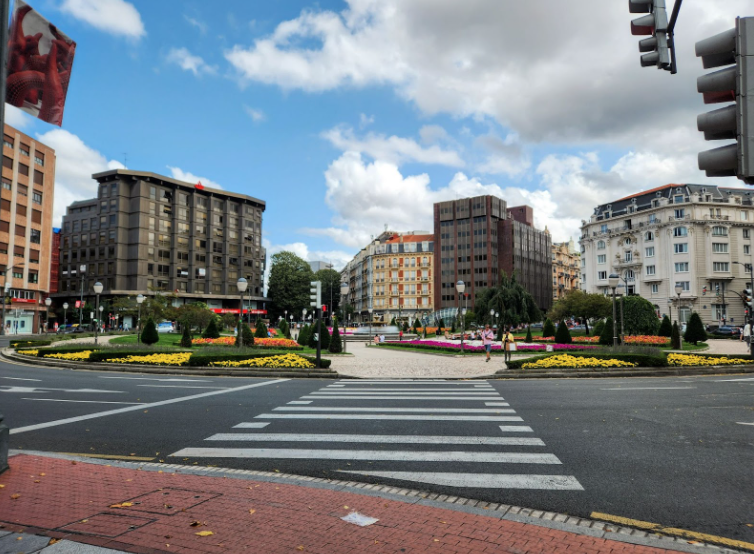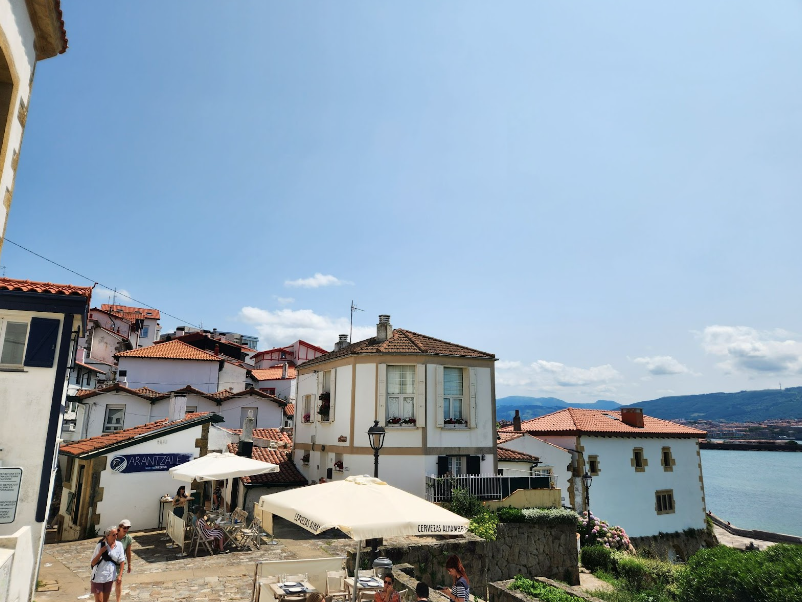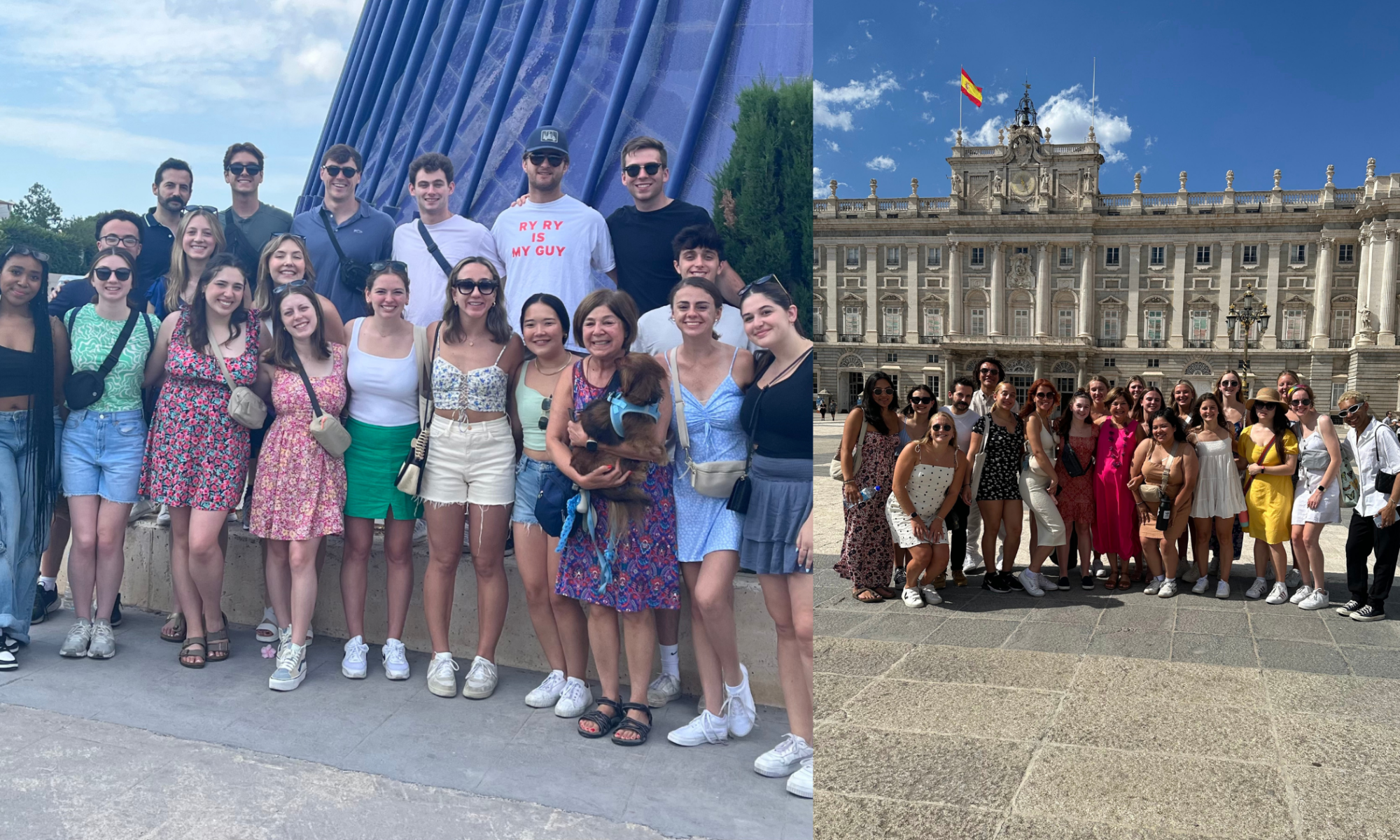Written By: Lauren Poltorak ‘26 (Session 2)
Ongi etorri Bilbora! This weekend, we made our way to Bilbao on the northern coast of Spain in the Basque Country. For the first three hours of the four hour bus journey, the landscape remained typical of the rest of Spain: parched, yellow fields over short hills with the occasional farm or town. However, as we approached the north, the earth returned to life. Fields of giant sunflowers stretched over hills that grew into immense, pine tree covered mountains. These mountains are the same ones that have separated the Basque people from the rest of Spain and ensured the preservation of the unique Basque language and culture.
Two important parts of Basque culture started to appear as we approached Bilbao: the Basque-style house and the Basque tongue. Basque-style houses (Baserri) are usually square-shaped with a wide, sloped tile roof, white stone walls, cobblestone base, and wooden beams on the upper levels. The house (etxea) is an essential symbol in Basque culture as it represents family ties. Many of the highway signs had text in both Basque and Spanish. The Basque language is truly fascinating and unique, so if you need a brain exercise, give it a try!
Bilbao greeted us as we passed through a tunnel bored through the towering mountains. High-rises and apartment complexes stretched from the tapering edges of the mountains down to the Atlantic coastline. We finally arrived! The atmosphere of Bilbao is markedly distinct from the other cities we have visited so far. The most noticeable difference is the climate. The mountains we passed prevent the dry Mediterranean air from reaching us and allowed a cool Atlantic breeze to surround us. A thin blanket of clouds gave us refuge from the summer sun, further contributing to the refreshing weather.
After settling into our hostel, I walked around town to get a feel for its true nature. As I walked through Casilda Iturrizar Park, a crisp breeze blew yellow leaves off the trees that lined the walkways, giving it an almost autumnal feel. The rustling of the trees mixed with the sounds of children playing on the green lawns as the elders made relaxed chatter on the benches. Further into the center of town, I reached the Federico Moyúa Plaza, where major streets from all parts of the city meet. In its center lies a brilliant fountain surrounded by pink and yellow flowers in full bloom. Friends and families strolled through the plaza slowly, absorbing every moment they spent together. Everywhere I went, it seemed that the cool climate of Bilbao was even reflected in its people.

On our second day, we visited Getxo, a beachside neighborhood. I exited the metro to a central square full of friends and families who had come to enjoy their Sunday by the ocean. In the commercial center of Getxo, the buildings were constructed in a very modern style; however, as we reached the cozy neighborhoods, the houses assumed the traditional baserri style. It was interesting to see modern architecture integrated with the ancient Basque style. In a way, the mix of styles shows how the Basque people will always carry on despite all that they have endured throughout history.
I reached an overlook that gave me a spectacular view of the cerulean waters of the Atlantic Ocean gently beating against a beach with golden sand, both surrounded by verdant mountains. As I descended to the beach, I passed through Puerto Viejo, a peaceful neighborhood where the bright basseri style dominates and every house has a name. Small restaurants inhabit some of these houses, the most prominent being Pintxo bars. Pintxo bars are named after the tapas-like dishes that they serve, which are composed of any variety of ingredients on a slice of bread and stabbed with a toothpick–or pintxo–not only to keep the ingredients from falling off the bread, but also to track how many pintxos a person has eaten. It was wonderful to slow down, relax, and enjoy some pintxos the way locals do.
After lunch, I continued walking down to the beach. I noticed that most people here were locals, many being families. Everywhere I walked, there was a prevailing sense of joy and harmony. My worries over final projects and flights home disappeared. In these moments, I did not think about the past or the future, only the beauty around me.

Bilbao is truly a wonderful city. On the surface, it may seem that Bilbao lacks Madrid’s grandiosity or Seville’s opulence, but that is precisely what makes it so special. Bilbao embraces its authentic self, proudly displaying its Basque identity while welcoming people worldwide into its tight-knit community. Bilbao is not just a place people visit but rather a place where people live. I adore Bilbao and I cannot wait to return someday and learn more about the Basque people and culture! Agur!


